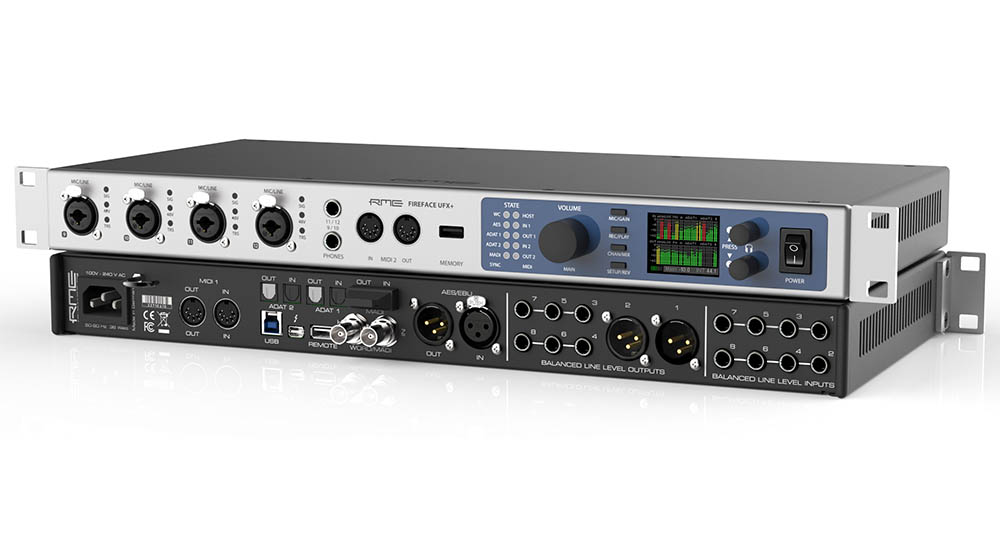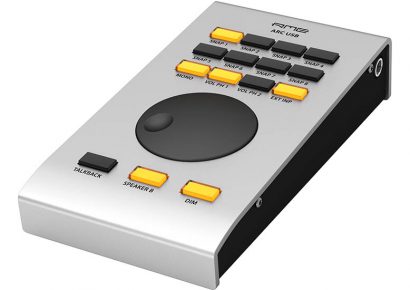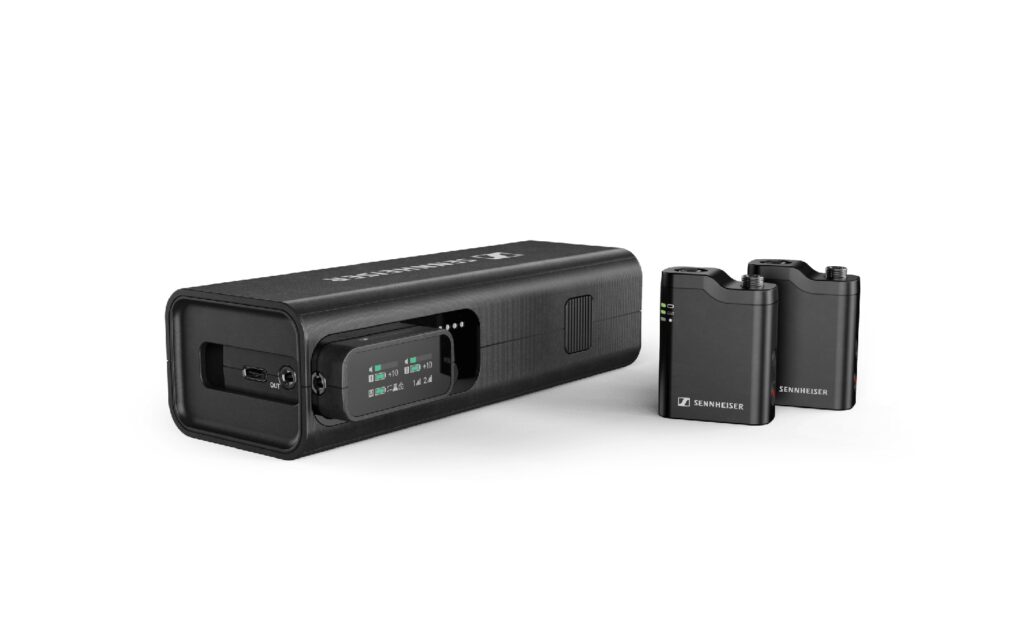The front panel proudly boasts four XLR/TRS combination jacks for microphone or line level inputs. These run straight into RME’s famous microphone preamps for amazing audio with any microphone without the need for external preamps down the signal path. There are also two stereo outputs on the front for use as headphone outputs for ease of monitoring. On the rear panel, a further eight balanced line level inputs are offered on TRS connections. On the output side at the read, you get a pair of outputs on XLR plus a further six on TRS connections. This gives you 12 analogue ins and outs on the hardware itself, but there are plenty of additional connections with digital interfacing.
Two MIDI inputs and outputs, offering 32 channels of MIDI data both ways are supplied. There are also two pairs of ADAT inputs and outputs, offering up to 16 digital channels both ways. Then, for additional audio inputs, an AES/EBU input and output on XLR round out the set. All this is fed through RME’s brilliant bridging software, TotalMix FX for direct monitoring and connectivity to your DAW. Inbuilt DSP allow you to take advantage of EQ and dynamic processing in TotalMix to give further power to your system. In addition to this, the Fireface UFX II offers direct USB recording from the front panel USB port with all channels capable of being recorded simultaneously to a USB flash drive. Of course, like all RME interfaces, you get nothing but stunning analogue to digital conversion with the UFX II and a master clock that controls your external digital devices on ADAT for the best clocking on the market. The results are in the recordings, with a noticeable improvement from most other audio interfaces on the market. But with the UFX II, you get that across more channels than you will know what to do with. This is a serious piece of kit and a superb basis for a larger recording setup.


